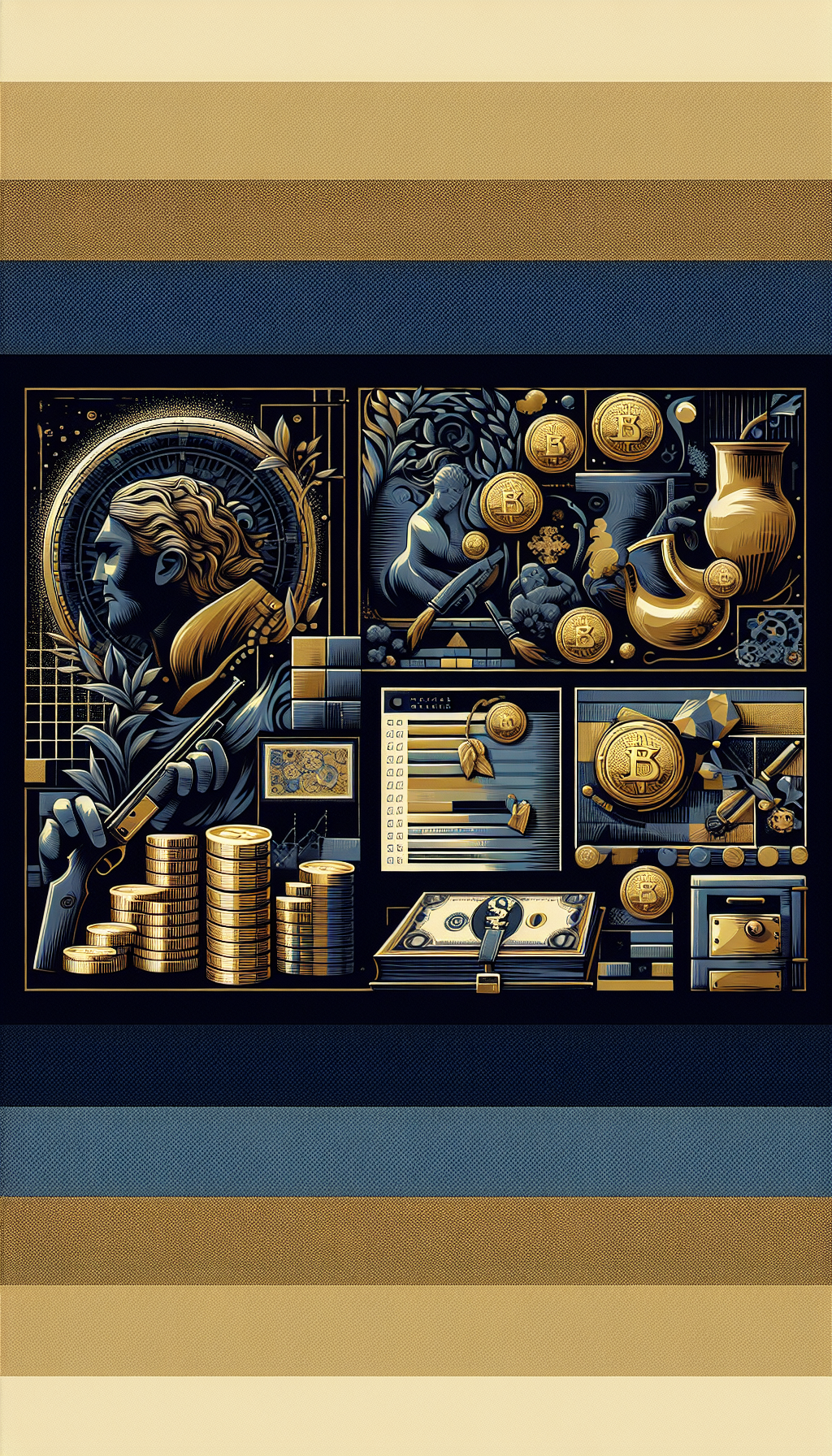Unlocking The Value Of Art Expert Appraisal Services For Collectors And Investors
Fine art and antiques markets reward knowledge, discipline, and documentation. Expert appraisal services bring those three together. Whether you are insuring a painting, donating a sculpture, building an investment thesis for a design collection, or planning an estate, a properly developed and documented appraisal can protect value, reduce risk, and create liquidity when you need it most. Here is how to use appraisal expertise to your advantage.
Why Appraisals Matter: Value Types and Use Cases
“Value” is not one number. Appraisers determine different types of value depending on your intended use. Selecting the right value definition is foundational.
- Fair Market Value (FMV): The price at which property would change hands between a willing buyer and seller, neither being under compulsion and both having reasonable knowledge of relevant facts. Commonly used for charitable contributions, estate tax, and equitable distribution. Generally reflects secondary-market realities (often auction-based).
- Retail Replacement Value (RRV): The cost to replace the item with one of like kind and quality, usually in the retail market. Used for insurance scheduling and claim settlements. Often higher than FMV because it reflects retail acquisition in a reasonable time frame.
- Marketable Cash Value: The expected net proceeds to a seller after costs of sale. Useful for investment and disposition planning, divorces, and some trust scenarios.
- Orderly Liquidation Value (OLV) and Forced Liquidation Value (FLV): Values under time-constrained sale scenarios. Relevant to lenders, insolvency, or situations requiring expedited disposition.
- Salvage Value: Value of materially damaged property.
Key use cases where robust appraisals unlock value:
- Insurance: Adequate scheduling helps avoid underinsurance and claim disputes. RRV-based schedules account for replacement in the retail market; FMV should not be used for scheduling. Appraisals also support sub-limits for specific mediums (e.g., jewelry, rugs) and clarify exclusions (e.g., gradual deterioration).
- Donations and Estate Planning: In the United States, charitable contributions over certain thresholds require a “qualified appraisal” prepared by a “qualified appraiser,” and Form 8283. The IRS may refer high-value donations to the Art Advisory Panel. Estates benefit from step-up in basis when assets are accurately valued as of date of death (or alternate valuation date).
- Collection Management and Investment Strategy: Appraisals benchmark performance, guide hold/sell decisions, and inform portfolio diversification across categories (e.g., Post-War paintings, design, photography, watches). They help quantify liquidity risk and transaction costs.
- Collateralization and Lending: Lenders often require FMV or OLV and impose haircut assumptions. Appraisers familiar with art finance can help match value type to the credit structure.
- Equitable Distribution and Litigation: Clear methodologies and market evidence reduce disputes in divorce, partnership dissolution, and probate.
- Cross-Border Movement and Compliance: Values inform import/export declarations and due diligence for cultural property restrictions. Materials like ivory and certain woods may be subject to CITES controls.
Always note the effective date. A valuation is an opinion at a specific point in time. For fast-moving markets (e.g., ultra-contemporary), even a few months can matter.
Inside a Qualified Appraisal Report
Strong appraisal reports are not just numbers—they are structured arguments supported by evidence. Expect the following elements in a qualified report:
- Client, Intended Use, and Intended Users: Who the report is for and how it may be used. Misuse (e.g., using an insurance appraisal for a donation) can invalidate conclusions.
- Property Identification: Detailed cataloging—artist/maker, title/description, date, medium, dimensions, markings/signature, edition (if applicable), foundry/printer, frame/mounting, and distinguishing features.
- Condition Report: Plain-language assessment of condition, noting restorations, repairs, relining, foxing, craquelure, patination, movement service history, and stability concerns. Condition directly affects value.
- Provenance, Literature, and Exhibition History: Chain of ownership, inclusion in catalogues raisonnés, certificates from artist estates or foundations, and significant exhibitions. Documentation can materially increase value by reducing authenticity risk.
- Market Analysis: Identification of the most relevant market (e.g., primary gallery, secondary auction, dealer/private treaty) for the subject property’s category and price tier.
- Comparable Sales and Adjustments: Selection of recent, arms-length sales for similar works. Appraisers explain adjustments for size, date, medium, subject matter, condition, signature, edition number, provenance strength, literature/exhibition pedigree, location, and market timing. Buyer’s premiums and seller’s commissions are addressed where relevant.
- Valuation Approach and Rationale: Typically market approach; cost approach for certain decorative arts or newly produced design; income approach in narrow cases (e.g., royalty-bearing IP). The report makes clear why an approach is appropriate.
- Value Conclusion: The type of value (e.g., FMV, RRV), the concluded number or range, and the effective date. For ranges, appraisers explain the point selection.
- Assumptions and Limiting Conditions: Clarity about what was assumed (e.g., clear title), what could not be verified, and the scope of any inspection.
- Certification and Qualifications: USPAP (United States), IVS, or RICS compliance as applicable; appraiser’s signature, credentials, and CV.
- Appendices: Photos, measurements, technical reports (if available), prior appraisals, and cited comparables.
In-person inspection versus digital assignments: Remote or “desktop” appraisals based on client-supplied information can be appropriate for low-risk updates, lower-value items, or large collections where inspection is impractical. However, in-person inspection is best practice for high-value works, uncertain attributions, or condition-sensitive objects. Complex cases may involve scientific analysis—infrared reflectography, X-ray fluorescence, dendrochronology—or consultation with conservators and scholars. Appraisers do not authenticate, but they coordinate recognized expert opinions when attribution is at issue.
Selecting the Right Appraiser
Credentials are a starting point, not the finish line. Look for:
- Accreditation and Standards: In the U.S., designations from organizations such as ISA (e.g., CAPP), ASA, or AAA; in other regions, RICS Registered Valuer or adherence to IVS. Confirm current USPAP compliance for U.S.-focused work. For jewelry, gemological qualifications (e.g., GIA) matter.
- Category Specialization: Markets are granular—Old Masters differ from Ultra-Contemporary; Scandinavian mid-century furniture differs from French Art Deco; African art, Native American material, photography, watches, rare books, silver, and ceramics each require specific expertise. Choose an appraiser deeply active in your category and price tier.
- Independence and Ethics: Appraisers should be independent of the transaction: no contingent fees, no purchase offers on the items appraised, and full disclosure of any potential conflicts. Confidentiality is standard.
- Market Familiarity: The appraiser should know the relevant selling venues (auction houses, dealers, online platforms), regional variations, and current demand cycles. Ask for anonymized work samples with redactions.
Questions to ask before engagement:
- Which value type will you develop for my intended use?
- What is your inspection plan—on-site, studio, or desktop? When do you insist on in-person inspection?
- How do you select and adjust comparables? Which databases and sources do you rely on?
- How do you address uncertain attribution, lack of provenance, or condition concerns?
- What is your fee structure? Reputable appraisers charge hourly or per-item—not as a percentage of value. Clarify expenses and travel policies.
- Do you carry professional liability (E&O) insurance?
- When was your last USPAP (or equivalent) update course?
Engagement letters should define scope of work, list of items, intended use/users, value type, effective date, inspection plan, deliverables, fees, and deadlines. Clear scopes reduce surprises and set defensible expectations.
Methods, Market Data, and Common Pitfalls
Understanding how appraisers analyze markets helps you interpret results and avoid costly mistakes.
Approaches to value:
- Market Approach: Primary in art and antiques. The appraiser triangulates from relevant, recent, arms-length sales. “Relevant” means the same artist/maker and series or period when possible, otherwise a carefully justified cross-section of comparable works.
- Cost Approach: Useful for items where replacement cost is determinative (e.g., custom contemporary design furniture, some decorative arts). Less applicable for unique, historically significant fine art.
- Income Approach: Rare, but can apply to property generating predictable income (copyrights, image licensing, certain fractional interests).
Comparable selection and adjustments:
- Data sources include public auction results and substantiated private sales. Good reports explain how buyer’s premiums, seller’s commissions, and taxes are treated.
- Adjustments account for differences in medium (oil vs. gouache), size, date, subject desirability, palette, condition, signature placement, edition size, provenance, literature/exhibition, and sale venue.
- Time adjustments matter in volatile categories. Ultra-contemporary markets can shift in months; blue-chip markets can trend over years.
Liquidity and transaction costs:
- For investment decisions, consider net proceeds after seller’s commission, photography, shipping, storage, and applicable taxes.
- Marketable cash value may be more informative than FMV for planned dispositions or loan-to-value calculations.
Attribution and authenticity:
- The presence in a catalogue raisonné, certificates from recognized authorities, or confirmed inclusion in artist estate archives strengthens value. The absence of such support increases risk.
- Red flags: inconsistent signatures, anachronistic materials, implausible provenance gaps, unusually “fresh” surfaces for age, and reluctance to provide prior conservation records.
- Appraisers do not “certify authenticity” but rely on credible consensus. When unresolved, a report should state the uncertainty and its effect on value.
Condition:
- Restoration is not inherently negative, but overcleaning, aggressive relining, excessive inpainting, or unstable materials can depress value. Conversely, period-appropriate patina can be value-positive for decorative arts and design.
- For watches and clocks, originality of parts, service history, and dial condition are critical. For furniture, replaced elements versus original construction techniques matter.
Market pitfalls to avoid:
- Using insurance values for tax or sale decisions: RRV can be materially higher than FMV.
- Shopping for value: Engaging multiple appraisers to obtain the highest number undermines credibility and can trigger scrutiny in tax contexts.
- Relying on asking prices: Dealer asking prices are not sales; they reflect aspiration, not market clearing.
- Mixing markets: A Paris auction result may not translate to a regional sale; high-value works often need global exposure.
- Ignoring legal constraints: Cultural property restrictions and CITES-listed materials (e.g., elephant ivory, certain rosewoods) can limit export, sale venues, and value.
- Overlooking the effective date: Retrospective appraisals must anchor to conditions and data available at that date.
Update cadence:
- For insurance, review every 3–5 years or after significant market moves, conservation, or acquisition of new documentation. For rapidly appreciating segments, consider shorter intervals.
Practical Checklist
- Clarify your intended use: insurance, donation, estate, lending, sale, or planning.
- Specify the value type with your appraiser (FMV, RRV, marketable cash value, etc.).
- Gather documentation: invoices, prior appraisals, certificates, provenance letters, conservation records, high-resolution images, measurements, and any labels or inscriptions.
- Disclose condition and alterations; do not clean or restore before inspection without advice.
- Agree on scope, inspection plan, effective date, and deliverables in an engagement letter.
- Confirm credentials, USPAP/IVS/RICS compliance, specialization, and references.
- Confirm fee basis (hourly/per-item), expenses, timeline, and E&O insurance.
- Ask how comparables will be selected and adjusted; request transparency in market data.
- For high-value or uncertain works, plan for in-person inspection and, if warranted, scientific or scholarly consultation.
- Review the draft report for correctness of facts (titles, measurements, medium) before finalization.
- File and schedule: share insurance appraisals with your broker; attach tax appraisals to required filings; update inventory records.
- Calendar updates: 3–5 years, or sooner for volatile markets or after conservation.
FAQ
Q: How often should I update my appraisals? A: For insurance, every 3–5 years or after major market shifts, conservation, or significant new provenance. For fast-moving contemporary markets, consider more frequent reviews.
Q: Can an appraiser authenticate my artwork? A: Appraisers do not authenticate. They evaluate market evidence and rely on recognized authorities (catalogues raisonnés, artist estates, expert committees). When attribution is uncertain, a report should disclose the risk and its impact on value.
Q: Are online or “desktop” appraisals acceptable? A: They can be acceptable for low-risk updates or lower-value items when the intended use allows. For high-value, condition-sensitive, or attribution-uncertain works, in-person inspection is strongly advised and sometimes essential.
Q: Why is the value on my insurance appraisal higher than auction results I see online? A: Insurance appraisals typically use Retail Replacement Value—what it would cost to replace from a retail source in a reasonable time. Auction results reflect secondary-market transactions and may be lower than retail.
Q: Can my dealer appraise and also offer to buy the piece? A: That’s a conflict of interest for appraisal work. Ethical standards prohibit contingent fees and discourage purchase offers on appraised property. Keep appraisal and buying/selling roles separate to preserve independence and credibility.
By aligning the right value definition with a clear intended use, selecting a qualified and independent appraiser, and insisting on transparent methods and market evidence, you convert subjectivity into an informed, defensible opinion. That, more than any headline number, is what unlocks lasting value for collectors and investors.




